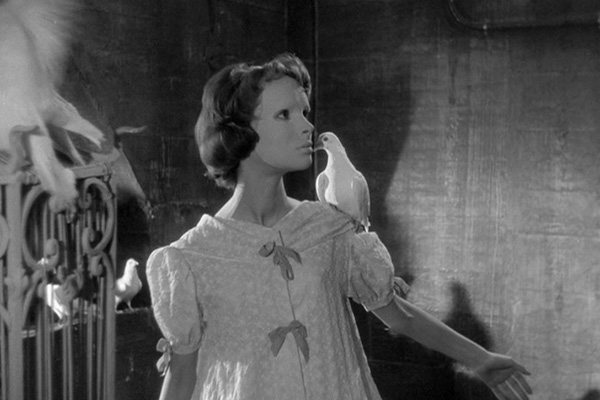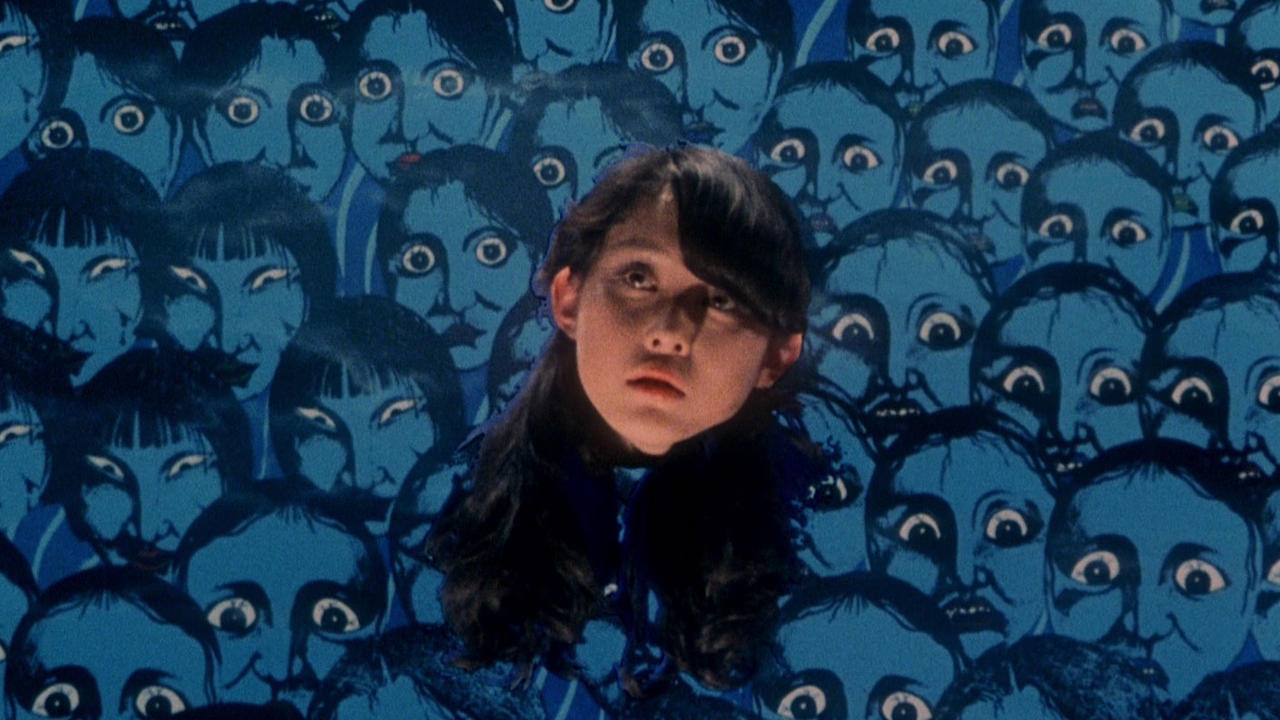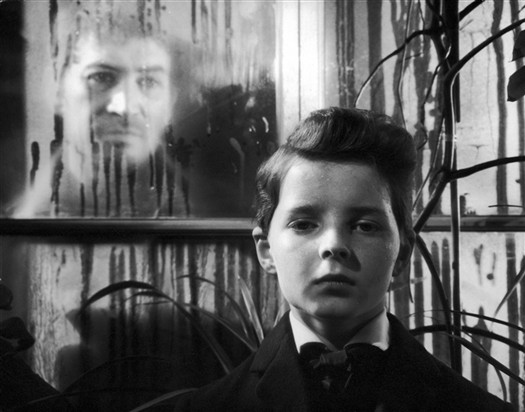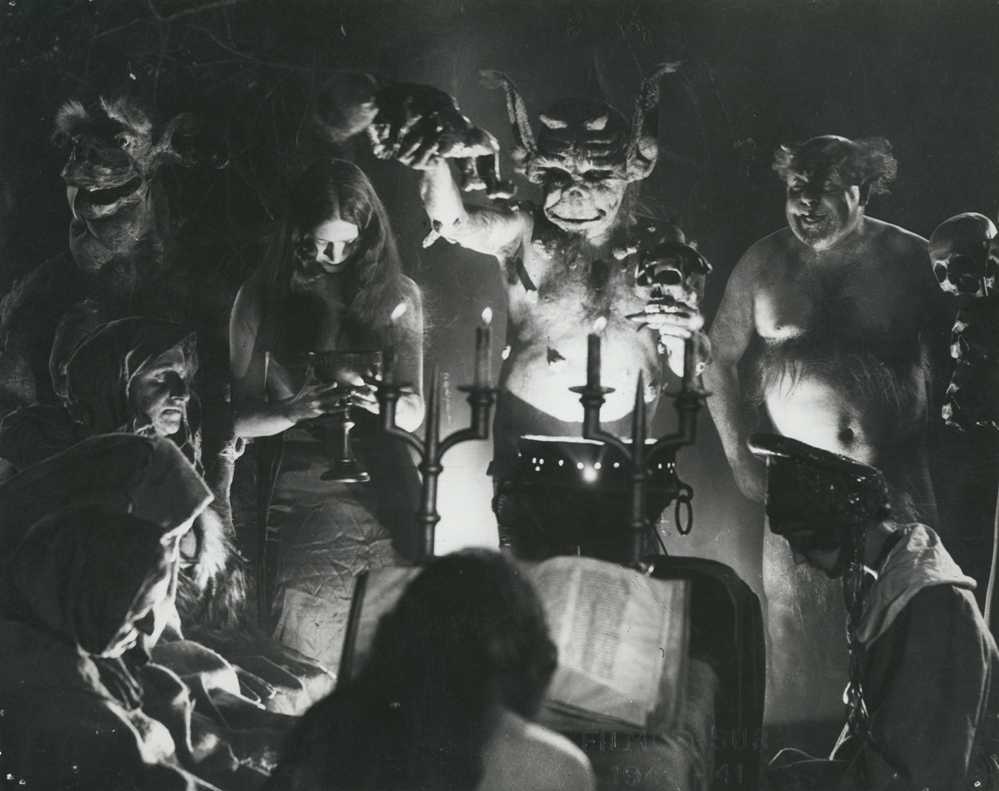5. Eyes Without a Face (1960)

French Cinema in the 1950s to the early 1960s is a cinema of seduction. Never before, and possibly never again has the celluloid art form so consistently and immaculately captured the elusive beauty of love and life. Eyes Without a Face is a French film released during this revered era, that seems to exist in direct opposition of this idea.
The narrative follows a deranged surgeon as he kidnaps young women in hopes of finding a suitable face transplant for his daughter. The film is an exploration into the concept of superficiality, the idea of ignorance that what we see is what we get, and Georges Franju ironically explores this idea in the most accessible manner possible, much unlike the daunting levels of experimentation offered by the Nouvelle Vague.
In an era of film history perpetuated by the idea of the male gaze, Franju’s vision provides a surprisingly mature study on the subject. This is an experience that personifies the themes of beauty, prejudice, disillusionment, portraying these concepts in the most unsettling light that is the cinema of horror.
4. Hausu (1977)

If there is a film that perfectly encapsulates everything one can possibly comprehend, or fail to comprehend about Japanese cinema as a whole, it would be Nobuhiko Obayashi’s Hausu. This is a film that contorts the unassuming and uninspired premise of a group of impressionable teens stumbling across a haunted house into a nightmarish dive down the bottomless pit of psychedelic imagery.
Obayashi’s vision is crystal clear, grounding the otherwise preposterous narrative. His characters are never truly developed beyond the archetypes they inherently represent, the story is never over-extended beyond its narrative capacity, this is a film conceived by a virtuoso that completely understands, even championing the idea of the kind of movie he set out to make. And what the film is, is an insanely entertaining ride that interprets horror as a byproduct of insanity rather than just a medium to incite fear.
The visuals and effects presented by Obayashi are decades ahead of its time, so much so that even nearly half a century following its release, Hausu, in all its celluloid glory, remains a technical and creative marvel that still manages to impress with the undeniable charm of Japanese filmmaking.
3. Nosferatu the Vampyre (1979)

German expressionism is perhaps one of the most important cornerstones of horror cinema, with F.W. Murnau’s Nosferatu serving as the epitome embodying the movement’s greatness. Though its reputation is certainly undisputable, Werner Herzog’s gritty 1979 reimagining of Murnau’s and, by extension, Stoker’s magnum opus, may very well succeed the originals in quality.
It truly is fascinating how much Herzog’s vision differs from Murnau’s, yet both films, released over half a century apart, somehow manage to resonate on most of the same levels. Herzog’s eccentricity, both as filmmaker and as an individual, complements the foundations built by Murnau’s calculated approach, painting the much familiar story in an entirely new light. A reinterpretation that’s hideous and barren, adding a much more elaborate exploration into the themes of lust and fear, themes that were otherwise just mere ideas suggested by the original film.
Though the narrative structure of the original is still, for the most part, honored by Herzog, the ensuing experience of Nosferatu the Vampyre is entirely different from the original. The surreal charm of the the expressionist classic is replaced with a far more sinister backdrop, one conscious about the societal connotations left mostly unexplored by both Murnau and Stoker. Even Klaus Kinski’s portrayal of the titular villain differs from the likes of Schreck and Lugosi, interpreting the character as less of a demonic entity operating out of society, and more of a broken recluse detached from normalcy.
Murnau’s Nosferatu may be revolutionary in its command of pace and atmosphere, but Herzog’s Nosferatu the Vampyre offers an arguably greater, more profound presentation of its atmosphere, one that integrates the madness of the auteur deep within the madness of the narrative.
2. The Innocents (1961)

A common component to most works of modern horror is the overreliance on gimmicks. On elements of the narrative that attempt to break free from genre constraints, perhaps in an attempt for lesser filmmakers to compensate for their poor command of storytelling. The Innocents is one surprisingly rare film that opted to tell a story free from such elements, remaining as true to the genre as possible, but instead of fading in the sea of an oversaturated genre as other similar works, The Innocents stands tall as a truly brilliant atmospheric piece of horror cinema.
Jack Clayton’s approach to horror is executed with an incredibly strong level of restraint, a fact all the more impressive considering the film’s grounds in melodrama. Clayton’s camera essentially saunters between the realms of objectivity and subjectivity, creating a perspective that’s surreal and unreliable, through the use of nothing else but his command of the atmosphere and characters.
The Innocents is a film unafraid to take its time to prolong the sense of dread, it doesn’t resort to cheap scare tactics, it instead, drags that uneasy insinuation of paranoia, extending it as long as the narrative allows it to, before it abruptly crescendoes into a brand of catharsis personified by hysteria.
The Innocents provides fundamentally, an honest, simplistic incarnation of horror. It’s a true, traditional work of art that directs all its efforts into creating an atmosphere. One complete with creepy children, unsettling statues, and the chilling landscape of a Victorian-esque countryside to tie everything together.
1. Häxan (1922)

In the infancy of cinema, few filmmakers dare to truly experiment with the art form’s limitations and actually test the limits of celluloid, especially considering the still-undefined set of rules that govern the very landscape of film. Perhaps that is the reason why horror films such as Caligari remain relevant, while the more radical films like Benjamin Christensen’s Häxan remain mostly in obscurity in the context of today.
A hybrid of genre and style decades ahead of its time, Häxan offers an extensive look into the mythos of witchcraft. Christensen explores this subject by blending numerous schools of filmmaking into one cohesive anthology. Echoes of mockumentary cinema, of the French New Wave, of the works of Dreyer, are all present in Christensen’s groundbreaking vision.
Though the filmmaking techniques employed in Häxan appear rather dated nearly a full century after its release, the ideas presented by Christensen as well as his boldness as a filmmaker to reinvent certainly garners some degree of admiration, to say the least. As preposterous as this notion may sound, if there does exist a single film in dire need of a remake, it’s Häxan.
If a filmmaker were to truly reinvent Häxan in the same vein as Herzog’s own reinvention of Nosferatu, essentially building on the impressive foundations prior established by the masters of old, keeping the essence of the original, what would most definitely ensue is a bonafide masterpiece of the genre that will stand the test of time.